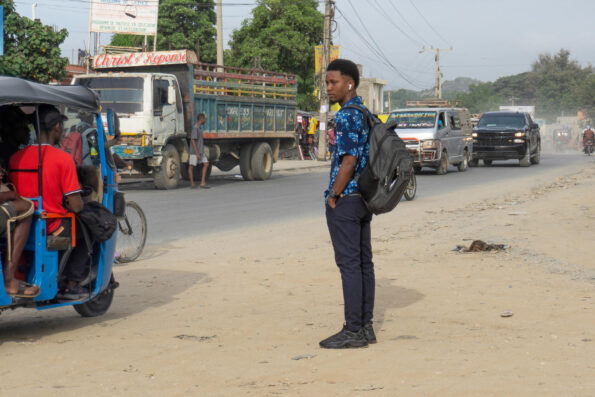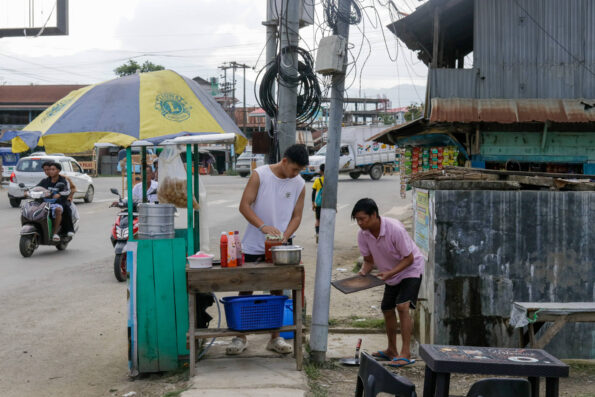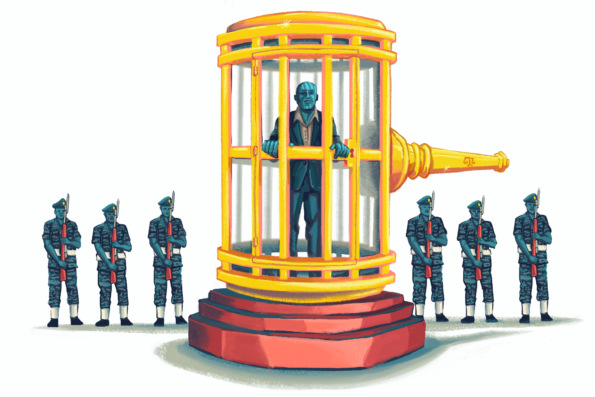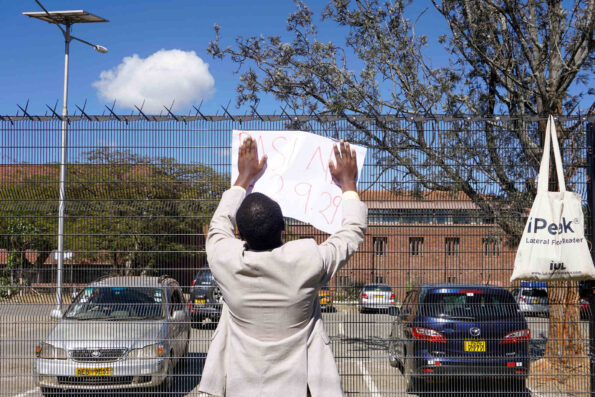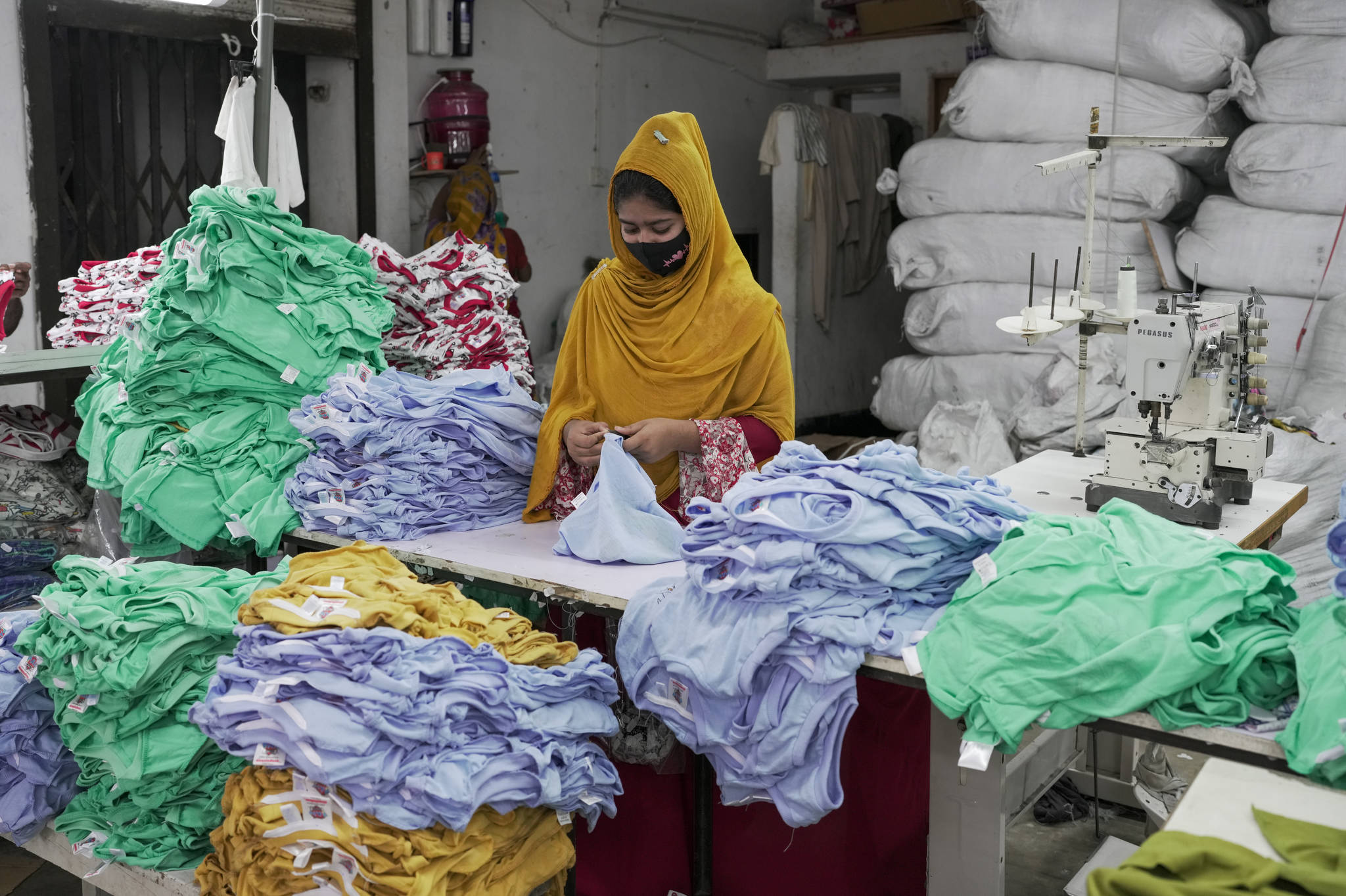
Fabeha Monir, GPJ Bangladesh
Taslima Begum sews clothes at a factory in Ashulia, Bangladesh, where the industry remains a key economic driver. But after widespread factory closures following the 2024 Monsoon Revolution, labor leaders say reforms have been slow and workers still face insecurity and exploitation.
ASHULIA, BANGLADESH — Lima Akter, 28, sold her television first. Then her phone, then her refrigerator. Now, she plans to sell her sewing machine. After working in the garment industry for 12 years, she’s unemployed — and has been since August.
Last year, garment workers — and many other Bangladeshis — protested for months against then-Prime Minister Sheikh Hasina’s autocratic regime, demanding fair wages and protection from human rights abuses. The protests, now called the Monsoon Revolution, culminated in August with Hasina’s flight to India and the collapse of her party, the Awami League, which was banned from politics.
Bangladesh’s US$47 billion garment sector, which supplies major global brands through low-cost manufacturing, has long been intertwined with politics. Many factory owners were leaders in the Awami League and had a hand in setting government-mandated wages for their workers. Many workers were paid — and sometimes required — to vote along party lines. In return, factory owners received favorable treatment, including access to bank loans and export contracts.



“As soon as Hasina fled,” Akter says, “our factory shut its doors.”
Akter’s mother-in-law lost her job in the same garment factory, and her husband did, too. They were among about 6,000 workers who were left unemployed at Generation Next Fashions, a textile company — and among the estimated 130,000 garment factory workers, mostly women, whose jobs disappeared when Hasina fled.
The protesters’ success came at a steep cost. About 140 factories shut down after Hasina left, according to local estimates. Some were vandalized or set on fire, and others were abandoned as their owners fled or failed to secure financing. Many lost critical purchase orders.
For many workers, the upheaval cost their livelihoods.



Hanging by a thread
Women garment workers have established Bangladesh as a seamstress to the world. The industry contributes about 12% to the country’s gross domestic product, and about 4 million Bangladeshis are directly employed in garment production for export.
But for workers, the prosperity is tenuous. Jobs were tightly bound to the political status quo — and when that status quo collapsed, so did the ecosystem around it.
There’s no indication that the new government, led by Muhammad Yunus, will bring about change for garment workers, says Dolly Akter Rehana, the founder and president of the Garments Industrial Workers Federation.
Before the Monsoon Revolution, labor leaders were able to negotiate with factory owners and officials from the powerful Bangladesh Garment Manufacturers and Exporters Association to resolve disputes. But the collapse of the Awami League left a power vacuum.



In October, the interim government dissolved the BGMEA’s board and appointed an administrator from the Export Promotion Bureau to oversee the sector. In May, new office bearers were finally elected — a sign of stabilization. Leaders of the Sammilito Parishad, which won the biennial election to lead BGMEA, released a statement that the association would “never again become a platform for any political party.”
But many workers are skeptical.
“In every regime, it’s the same,” Rehana says. “It’s easy to bribe or manipulate workers with job offers or money because these women and their families are living on one meal a day.”
To make matters worse, the United States government on July 7 announced that a 35% tariff would apply to all Bangladeshi products imported to the US.
“The new tariffs raise worries about job losses in Bangladesh as the US is its main export market,” says former BGMEA director Md. Mohiuddin Rubel. “Bangladesh needs to act quickly by engaging US importers to push for policy changes, resuming high-level trade talks, and highlighting the importance of its products.”



‘A system of domination’
Garment workers say they haven’t been able to vote freely in years — even in the face of Hasina’s alleged election-fixing.
Lucky Akter, 38, a garment worker from Gazipur, remembers how factory management gave her 2,000 Bangladeshi taka (about US$16) to support the Awami League in the January 2024 election.
“We queued in the factory office,” she says. “They had our voter list, and management said it’s good for the country’s development and [the] factory.”
Lucky Akter supports a family of five.
“For me, democracy is having a job,” she says. “So I voted as they asked.”
For workers living hand-to-mouth, voting as directed is a survival strategy, says Rashed Al Mahmud Titumir, a professor in the Department of Development Studies at the University of Dhaka. “It must be seen as a forced choice inflicted on them.”
Rubel acknowledges that voter coercion was common. “This kind of practice was there previously, but not everyone was like this,” he says. “It was done only by dishonest political businessmen.”
Julekha Akter, 21, started working at garment factories in Gazipur five years ago, including for three years at Innert Group, which was among the factories that closed in August. She says she was never allowed to leave the factory to vote. But in many factories, she says, it’s an open secret that workers had to vote for the Awami League.
Julekha Akter recently found a job at another factory. “There are very few work opportunities in the rural area where we came from,” she says, and she’s optimistic that a good government can change the fate of workers.
But will it?
“The government must decide — will it continue with business as usual or pursue a people- and women-centered approach?” Titumir says. “Currently, there’s no bargaining power for women. It’s still a system of domination.”



Lucky Akter is determined to vote freely in future elections, but she wonders if it will make a difference. “We need someone who will stand with business, with us, and for the country,” she says. “But do we even have such a candidate?”
Many factories damaged in the Monsoon Revolution are still shuttered. While workers wait for them to reopen, reform remains elusive. Rather than boost wages and worker protections, factories have an incentive to do the opposite. The hiring process has become more competitive — and invasive.
There’s an “unbelievable checklist to get a job in garments now,” Julekha Akter says. Employers verify education, check that applicants aren’t involved in worker unions, and even assess hygiene. And though her factory turns out thousands of garments a day, Julekha Akter can’t afford new clothes.
“The money I earn is not enough for three meals,” she says. “How can I spend money on good hygiene or outfits?”


